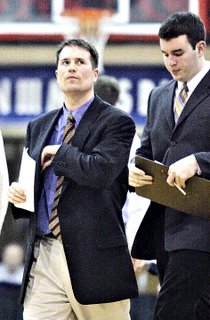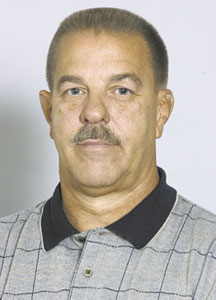The Waiting Is The Hardest Part
A little bit of this and that; some notes, quotes and anecdotes, if you will; and a peek or two into the past and glimpse into the future … all related to Pioneer Athletic Conference football teams.
Hold onto your socks now (or, if you prefer, your helmets)… the Pioneer Athletic Conference season doesn’t open for two more weeks.
No matter what you’ve heard, seen in any of the scrimmages, or get to hoot and holler about during tonight’s and next week’s non-league games, nothing really is for sure until Friday evening, Sept. 12 – when Methacton makes its PAC-10 debut up in Boyertown, Phoenixville travels to Pottsgrove, Upper Perkiomen visits Owen J. Roberts, Spring-Ford heads over to Perkiomen Valley, and St. Pius X buses a few blocks across town to meet Pottstown.
And it’s likely to only get better and better after that, all the way to Thanksgiving morning.
Now, if only the fellas down there at Perkiomen Valley and Methacton would get together and agree to move their game from Saturday, Nov. 8 back to Thanksgiving morning (like it once was), the final round of the Pioneer Athletic Conference would really PAC a punch (hint, hint).
HARD DEFENSE
In the previous 22 years of the Pioneer Athletic Conference, only two schools have won back-to-back, undisputed championships. Spring-Ford actually did it twice (in 1986 and 1987 and again in 1994 and 1995), while Pottsgrove (in 2000 and 2001) did it the other time.
Two others, Pottsgrove and Lansdale Catholic, won or shared consecutive titles. Pottsgrove won it all in 1990, then shared the top spot with Owen J. Roberts the following year. LC dominated in 1996, tied Upper Perkiomen for the title in 1997, then shared the top spot with both Perkiomen Valley and Spring-Ford in 1998.
Pottsgrove and Owen J. Roberts both closed up their 1991 schedule at 7-2, the only season a league champion finished with two losses. It was also the only season seven teams – that’s right, seven teams – finished with winning records. And 1998 was the only season to end in a three-way tie for the championship.
SCORES TO SETTLE
There are two PAC-10 series that are split right down the middle after 22 seasons. Pottstown and Upper Perkiomen are 11-11 against one another, a deadlock that will end when they meet Sept. 19. Pottstown is 11-11 against Perkiomen Valley, too, and that will end when they meet Oct. 10.
MORE EVEN-STEVENS
Longtime Pottstown and Upper Perkiomen fans may not want to hear about that so-called home-field advantage. In Pioneer Athletic Conference games only, both the Trojans and Indians are 48-48-1 in games on their home fields.
And if that isn’t enough, Owen J. Roberts is 45-45 in away games since joining the conference in 1988.
NO TOTAL STRANGER
Methacton enters its first season in the PAC-10 having never before played four teams – Boyertown, Pottsgrove, Pottstown and Upper Perkiomen. However, the Warriors have run into the other five teams in non-league games. They are 0-1 against Owen J. Roberts, 18-4-2 against Perkiomen Valley, 2-2 against Phoenixville, 2-9-1 against Spring-Ford, and 1-0 against St. Pius X.
STREAKING
Pottsgrove still holds the PAC-10 record for the most consecutive games without being shut out (57, set from 1988 to 1994).
If the Falcons can score at least one point (OK, two for a safety … or more) in every one of their games this season, they’ll break that record and push their current streak to 58 games.
Spring-Ford, which has scored in its last 46 league games dating back to 2002, owns the second-longest streak (53). Lansdale Catholic left the conference with a 50-game streak.
* * *
The next PAC-10 shutout will be the league’s 200th since the inaugural season back in 1986.
PLAYOFF SKED
The District 1 Class AAA and AAAA playoffs get under way the weekend of Nov. 7-8. Eight teams will qualify for the AAA bracket, while 16 will qualify in AAAA. The AAA final will be Nov. 21or 22, while the AAAA final is set for Nov. 28 and 29.
While District 1 is a region in itself in the two aforementioned classifications, it’s an entirely different story in AA and A.
In Class AA, the district’s three teams will compete with the 11 teams in District 12 for one or more of the four places in that sub-region, and no team
is guaranteed an entry into the playoffs because of having just three teams in the classification.
In Class A, the five District 1 teams will compete with the six teams from District 12 for positions in the four-team sub-region bracket. Discussions between the two districts will determine the format by which the four teams are selected.
All of the brackets’ Eastern finals are the weekend of Dec. 5-6, with state finals scheduled for Dec. 12-13 in Hersheypark Stadium.
SERIOUS SERIES
The current members of the Pioneer Athletic Conference have previously played in a number of different leagues, most in the former Bux-Mont and Ches-Mont leagues … but have managed to play one another quite a bit regardless of their membership cards.
The longest series among PAC-10 teams belongs to Phoenixville and Pottstown, who have met 95 times. Other notable rivalries (with the number of meetings in parenthesis) include Phoenixville and Spring-Ford (53 years), Spring-Ford and Owen J. Roberts (52), Pottstown and Spring-Ford (51), and Boyertown and Upper Perkiomen (50).
Two local series – Owen J. Roberts and Phoenixville, and Owen J. Roberts and Pottstown – will hit the 50-year mark this season. OJR and Phoenixville are scheduled to meet Oct. 17, while OJR and Pottstown renew their riveting Thanksgiving Day rivalry on Nov. 27.
* * *
Phoenixville and Pottstown actually own the seven longest series among PAC-10 schools. Ironically, only one – the Phantoms’ and Trojans’ 96th meeting on Sept. 26 – is still active.
The next six longest series belong to Phoenixville and Henderson (82 years), Phoenixville and Coatesville (78), Pottstown and Coatesville (69), Pottstown and Henderson (67), and Phoenixville and Downingtown (66).
COUNT’EM UP
When Pottstown lines up Thanksgiving morning against Owen J. Roberts, it will be the 999th game in the history of the Trojans’ program. … Upper Perkiomen will play its 600th against Downingtown West next Friday night. … Pottsgrove wll play its 550th a week later, Sept. 12, against Phoenixville.
MILESTONES AHEAD
Phoenixville needs two wins for 550 in the long history of its program, while Spring-Ford needs six for 275 and Upper Perkiomen needs just one to hit 260. … On the other end of that scale, Boyertown’s next loss will be No. 360, Upper Perkiomen’s next loss will be No. 325, and St. Pius X’s next loss will be No. 260.
Labels: Don Seeley, football, PAC-10
 RSS
RSS




